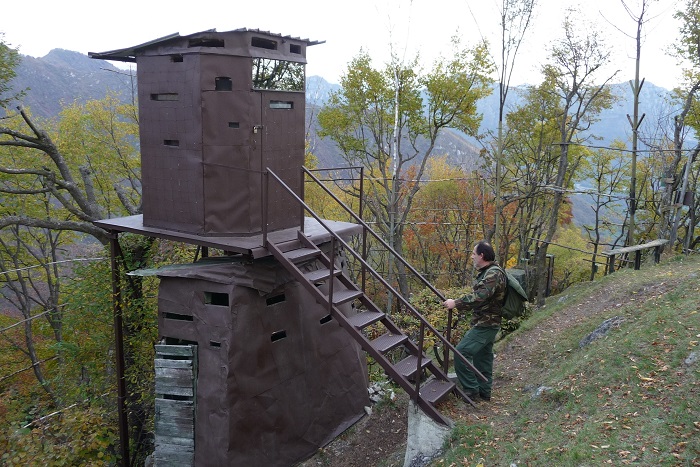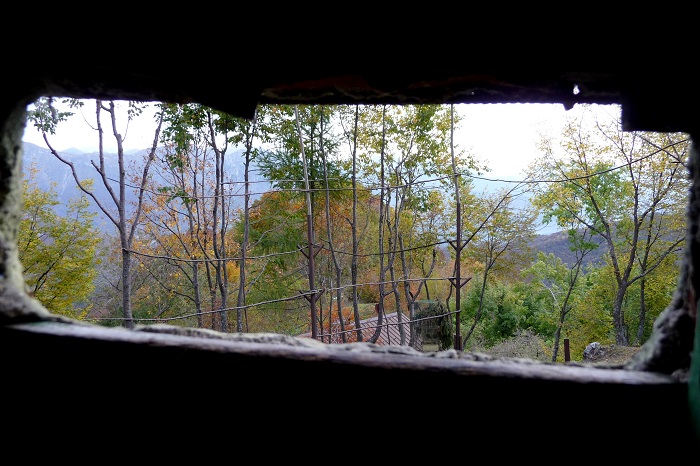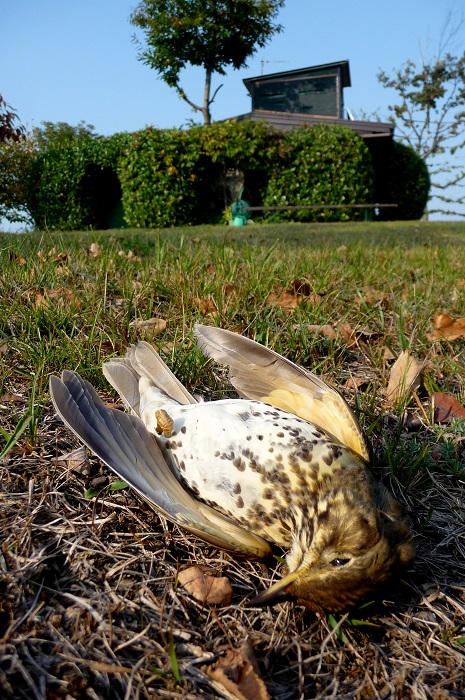Camouflaged hunting hides - Capanni

How Italian hunters hijack wild bird migration
No bird hunting method is as effective as the Italian camouflage hunting hides known as 'Capanni'. Entire flocks of migratory birds are lured to their deaths - daily hunting bags of 50+ birds per person are not uncommon. There are >11,000 such hides registered in northern Italy and they are so densely populated in the region that migratory birds have almost no chance of crossing the Alps without being targeted.
Capanni hunting hides are strategically positioned on generous open spaces in the mountain forests. In autumn, rowan trees intentionally planted around the enclosures are full to the brim with berries; and fresh water in baths invite the passing birds to fuel up and take a dip. But what is perhaps most alluring to the birds, in the truest sense of the word, are the familiar calls of their fellow kind crammed into small cages: the live decoys are kept in the dark throughout the summer and are not taken out of their dungeons until the hunting season begins in autumn. In spite of the miserable husbandry conditions, the birds begin to sing immediately - disorientated by the sudden offer of light, their hormones believe it to be spring. In the middle of the enclosure stands the camouflaged hunting hide - a kind of bunker with discrete windows or embrasures. A bed and a gas oven are often also part of the inventory, because the hunters often spend the night in the mountains in order to be in prime position with their guns at first light.

Migratory birds that have just completed the arduous journey over the snow-capped three thousand metre peaks of the main Alpine ridges urgently need to find food and water to refuel. Drawn in by the calls of their conspecifics, the passing birds are duped into settling on the horizontal perches which are set everywhere. Once enough birds have arrived, the hunter shoots out of the hut into the flock of birds - skilled shooters can kill several birds at once.
Shooting is permitted for blackbirds, song thrush, fieldfare and redwing as well as on skylarks. The maximum quota per person (depending on the region) is - 25 or 30 birds per day. Because this is not enough for the huntsmen, they often try to extend hunting to protected species such as brambling and chaffinches.
On good migration days all Capanni hunting hides are occupied. The spring-like chorus of singing thrushes and larks is broken by relentless gunfire. The only chance for birds to overcome the barrier of shooting sites is on Tuesdays and Fridays, when hunting in Italy is closed.

The whole method of hunting depends on the use of live decoys. Each hunting hide has an average of 25 birds, of which around a quarter die every year. Only a small part of the supply is covered by captive breeding. The majority of the live decoys are wild birds, which are either caught illegally with nets or stolen from nests as chicks.
Many of the hunters do not stick to the letter of the law. During spot inspections by authorities and game wardens, violations are frequently found in around 1 in 4 of every spot check. The most common offence is the shooting of protected species. The most popular species are wagtails, reed bunting, robins, dunnocks, goldfinches and siskins. In addition, the permitted daily "bag limit" is often exceeded for songbirds that are allowed to be shot, or illegal electronic decoy callers are used, which are cheaper and more effective than live decoy birds.
The frightening result is that more than 10% of hunters in these capanni hunting hides are poachers in the truest sense of the word. Even then, this is only the tip of the iceberg, because many hunters are warned by colleagues about the inspections and can quickly hide evidence of illegally killed prey.
During CABS' bird protection camps in Italy, we regularly check the hunting hides. If we find evidence of bird trapping with nets or other traps, live decoys belonging to protected species or of the use of electronic callers, we gather evidence and call in the authorities.






